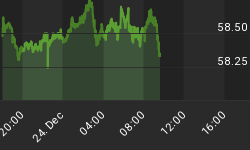9/20/2010 8:55:55 AM
Quadruple witching (expiration of stock index futures, stock index options, stock options, and single stock futures) occurred with relatively low volume and volatility...
Recommendation:
Take no action.
Daily Trend Indications:

- Positions indicated as Green are Long positions and those indicated as Red are short positions.
- The State of the Market is used to determine how you should trade. A trending market can ignore support and resistance levels and maintain its direction longer than most traders think it will.
- The BIAS is used to determine how aggressive or defensive you should be with a position. If the BIAS is Bullish but the market is in a Trading state, you might enter a short trade to take advantage of a reversal off of resistance. The BIAS tells you to exit that trade on "weaker" signals than you might otherwise trade on as the market is predisposed to move in the direction of BIAS.
- At Risk is generally neutral represented by "-". When it is "Bullish" or "Bearish" it warns of a potential change in the BIAS.
- The Moving Averages are noted as they are important signposts used by the Chartists community in determining the relative health of the markets.
Current ETF positions are:
Long at DIA $102.80
Long QQQQ at $44.76
We are long Oct $106 DIA puts at $185 per contract ($1.85 per share) on Friday, Sept 17th. (current bid = $195)
We are long Oct $48 QQQQ puts at $94 per contract ($0.94 per share) on Friday, Sept 17th. (current bid = $104)
We are long Oct $113 SPY puts at $231 per contract ($2.31 per share) on Friday, Sept 17th. (current bid = $258)
Daily Trading Action
The major index ETFs opened higher and peaked within the first ten minutes before moving lower for about another half hour to reach their low of the day. The rest of the session was spent see-sawing higher which gave way to weakness in the final hour of trading. A surge with a half hour left to go again gave way to weakness in the final fifteen minutes which ended with the Dow and S&P-500 lower, but only after their index ETFs went ex-dividend. This left all the major index ETFs posting modest gains. The Russell-2000 (IWM 65.21 +0.27) gained ground like the NASDAQ-100 with the Semiconductor Index (SOX 334.35 +0.11) posted a minor gain. The Bank Index (KBE 23.23 -0.19) lost most of one percent and the Regional Bank Index (KRE 22.39 -0.04) lost a nominal amount. Both bank indexes remain in trading states with BEARISH BIAS. The 20+ Yr Bonds (TLT 101.67 _0.41) posted a minor gain on above average volume. NYSE volume was above average with 1.227B shares traded. NASDAQ volume was above average with 2.410B shares traded.
There were three economic reports of interest released:
- CPI (Aug) rose +0.3% versus an expected +0.2% rise
- Core CPI (Aug) was flat +0.0% versus an expected +0.1% rise
- University of Michigan Consumer Sentiment (Sep) came in at 66.6 versus an expected 70.0
The first two reports were released an hour before the open. The final report was released twenty-five minutes into the session.
Quadruple witching (expiration of stock index futures, stock index options, stock options, and single stock futures) occurred with relatively low volume and volatility. Quadruple witching occurs quarterly and generally sees significantly greater volume. Measured by the fifty-day moving averages, volume was above average on both the NASDAQ and the NYSE but overall volume didn't spike as much as it often does with quadruple witching. Volume is just beginning to return and we expect it to build over the coming week.
Healthcare and Materials were unchanged. Four out of ten economic sectors in the S&P-500 moved higher: including Industrials (+0.9%), Telecom (+0.6%), Tech (+0.5%), and Consumer Discretionary (_0.3%). Energy (-0.5%), Financials (-0.5%), Consumer Staples (-0.1%), and Utilities (-0.1%) moved lower.
Implied volatility for the S&P-500 (VIX 22.01 +0.29) rose a bit more than one percent and implied volatility for the NASDAQ-100 (VXN 22.26 +0.45) rose two percent.
The yield for the 10-year note fell one basis point to close at 2.75. The price of the near term futures contract for a barrel of crude oil fell ninety-one cents to close at $73.66.
Market internals were mixed with advancers leading decliners 3:2 on the NYSE and by 4:3 on the NASDAQ. Down volume led up volume nearly 5:4 on the NYSE while up volume led down volume 5:4 on the NASDAQ. The index put/call ratio rose 0.46 to close at 1.51. The equity put/call ratio was unchanged at 0.58.
Commentary:
Friday's trading saw most of a stand-off between bulls and bears. The resistance levels we have been monitoring have been breached by the Dow and NASDAQ-100 but not yet by the S&P-500. The Dow also has overhead resistance at the 10,720 level from its August 9th high. The levels we are monitoring are:
| Index | Resistance | Actual |
| Dow | 10,590 | 10,607.85 |
| NASDAQ-100 | 1,940 | 1955.83 |
| S&P-500 | 1,130 | 1125.59 |
I will continue to monitor these levels and I am looking for topping action to occur shortly. The nature support is such that a shallow dip could be recovered from but a more drastic move lower could be profitable for short (or put) positions. The markets opened higher and we took the opportunity to buy put positions on the cheap as insurance for our long positions. With the major indexes in uptrend states with a BULLISH BIAS, probabilities favor a continued move higher. However, patterns are such that a sharp move lower is possible in the next couple of sessions and we would like to be protected from such a move. We will bide out time in our long positions fully protected by our puts for a couple of days.
We hope you have enjoyed this edition of the McMillan portfolio. You may send comments to mark@stockbarometer.com.















